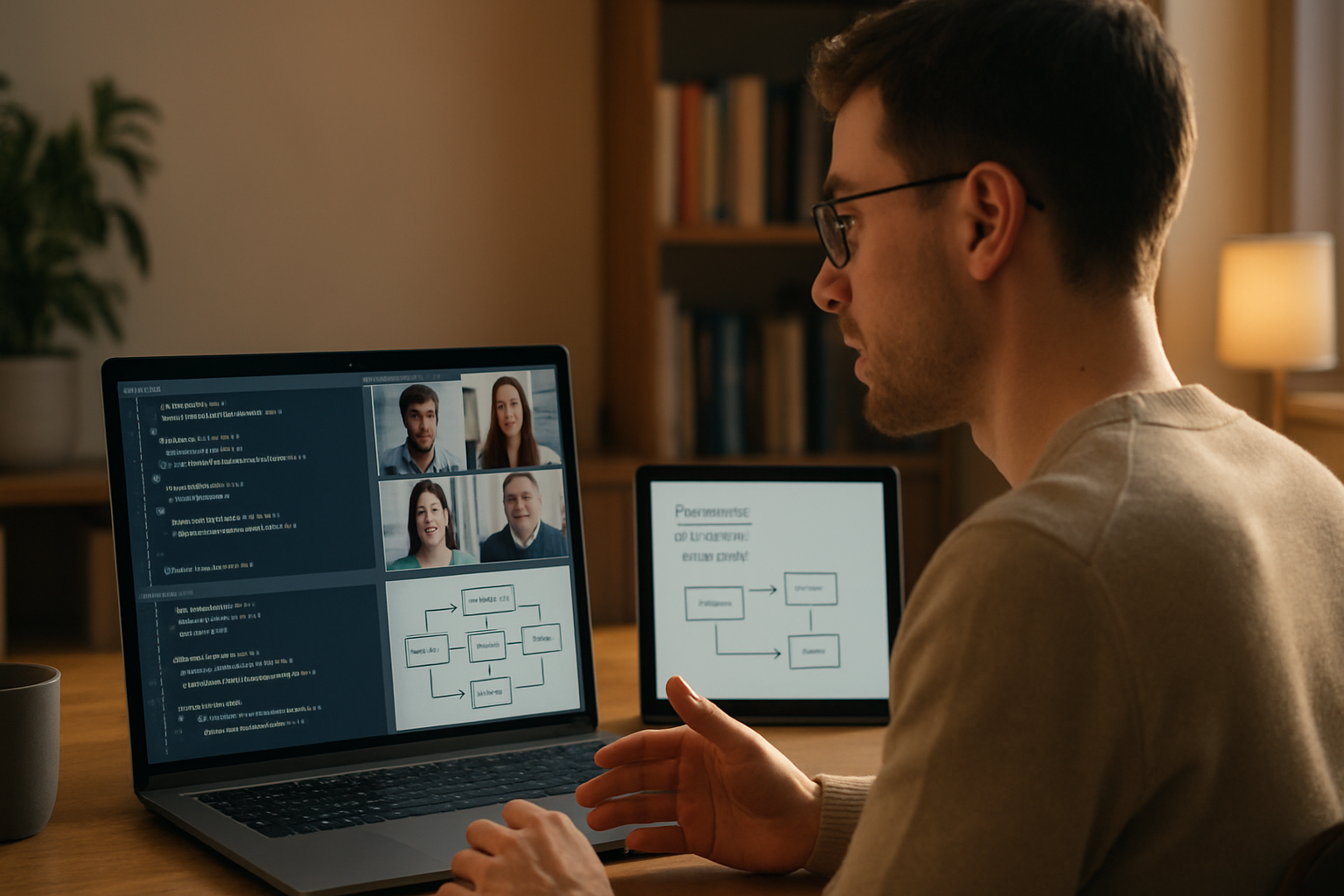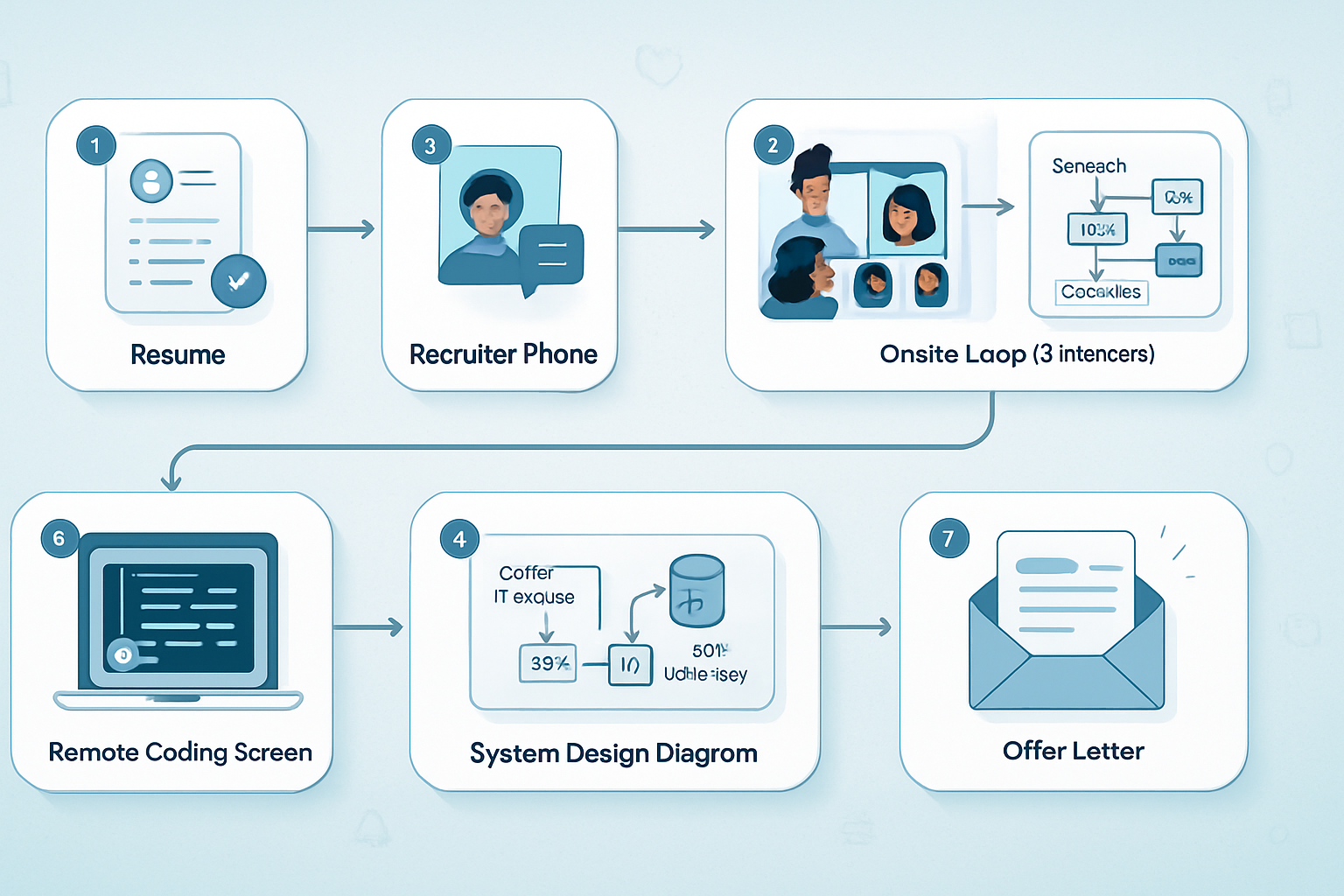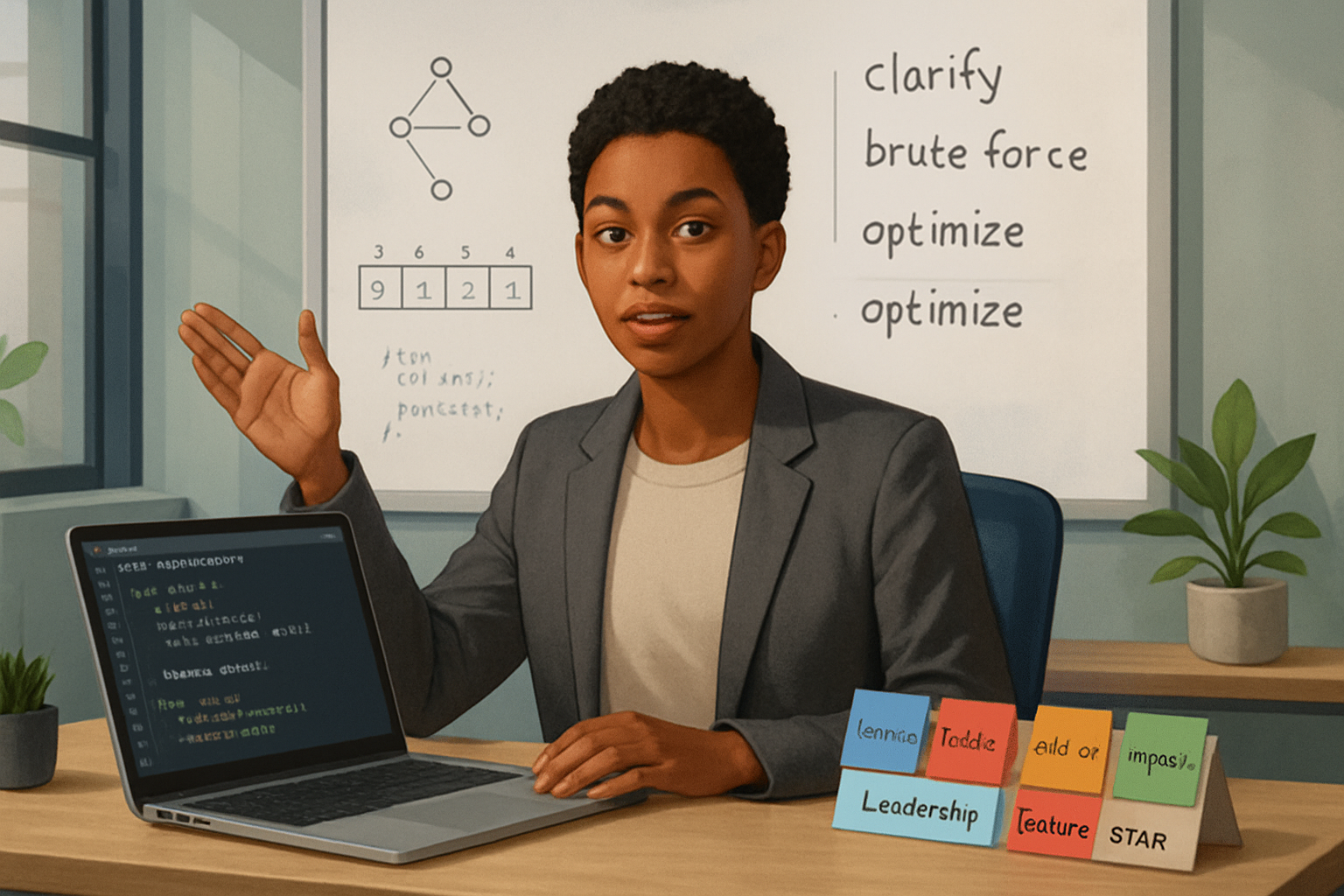· career · 7 min read
The Unwritten Rules: Surviving the Meta Software Engineer Interview Process
Beyond LeetCode and system diagrams: real, less-discussed behaviors and cultural expectations that tilt the balance in Meta software-engineer interviews. Practical scripts, a prep timeline, and bite-sized 'unwritten rules' from past candidates.

Why “unwritten rules” matter
The Meta (Facebook) interview is familiar to many: algorithmic coding screens, a systems-design round, and behavioral conversations. What most preparation guides miss are the subtle cultural expectations and conversational rhythms interviewers reward - things candidates who rely solely on problem-solving practice often overlook.
This article collects those hard-to-find, high-leverage tips reported by past candidates on forums and inside networks. They won’t replace technical practice, but they will help you communicate your competence and fit more effectively.
Sources and signals referenced throughout include company career pages and discussion communities where former candidates share experiences (Meta Careers, Blind, r/cscareerquestions, LeetCode Discuss, Glassdoor).
A quick overview of the typical flow (so we have a frame)
- Recruiter screen: conversation about background, motivations, logistics.
- Technical phone/screen: one coding question (online editor) or takehome.
- Onsite loop (virtual or in-person): 3–5 interviews including coding, systems design, and behavioral/teamwork.
- Debriefs and hiring committee review.
Timing and exact rounds vary by level and role, but the unwritten rules below apply across most of these touchpoints.
The core unwritten rules (high impact)
Talk like you’re pairing - narrate your mind.
- Interviewers want to understand how you think and how you communicate with teammates. Say what you’re considering, why you choose an approach, and what you’re worried about.
- Short script: “I see three directions: A, B, C. I’ll start with A because it’s simplest and we can optimize later. If we need more performance, I’d switch to B.”
Ask clarifying questions, then lock in assumptions.
- Don’t rush to code. Ask input size, constraints, and edge cases. Repeat your assumptions before you code.
- Example: “To confirm: inputs fit in memory, and n ≤ 10^5? I’ll assume string characters are ASCII unless told otherwise.”
Write a brute-force correct solution first (if time), then iterate.
- Interviewers prefer a correct, clear solution you can improve over an incomplete optimized attempt.
- Say: “I’ll implement a straightforward O(n^2) approach first to make the logic explicit, then we can discuss optimizations.”
Test out loud and be your own reviewer.
- Run a few hand-traced examples, including edge cases. If you discover a bug, own it and fix it; interviewers prefer humble, effective debugging.
Be explicit about trade-offs during design/system rounds.
- When proposing an architecture or data model, name trade-offs: latency vs. throughput, consistency vs. availability, cost vs. performance.
- Use a short template: requirement → constraint → design choice → trade-off.
Show product context and user focus.
- Tie technical decisions back to user impact. Interviewers at Meta often look for engineers who think about scale and product outcomes.
- Example: “We can shard by user-id to reduce hotspots; that reduces latency for reads but requires cross-shard joins for social-graph queries - acceptable if we cache common joins.”
Mirror interviewer energy and rigor, not personality.
- If the interviewer is terse and technical, stay focused and crisp. If they’re exploratory and collaborative, be more conversational. Don’t try to be someone else.
The first 5 minutes set tone: be present.
- Small talk matters. A quick relevant comment about the product or the interviewer’s locale can humanize the conversation and buy goodwill. But keep it short (30–60 seconds) before moving into technical material.
Use the whiteboard/editor like a shared artifact.
- For virtual interviews, practice coding on Google Docs/CodeInterview/CoderPad and talking through edits.
- Keep your code clean, well structured, and annotated with short comments.
Manage hints graciously. If an interviewer hints, try some time, then accept help with gratitude.
- Interviewers sometimes nudge to evaluate collaboration. Document the hint into your solution and acknowledge it helped shape the final approach.
Behavior and culture - what “fit” really looks like
Meta evaluates technical ability plus cultural fit: bias for action, strong ownership, iterative product thinking, cross-team collaboration.
- Ownership: describe times when you took end-to-end responsibility - not just coding, but shipping, monitoring, and iterating.
- Bias for action: show you can make decisions with imperfect info and iterate quickly. Use concrete timelines/numbers.
- Collaborative mindset: demonstrate how you navigated disagreement, incorporated feedback, and aligned stakeholders.
Quick STAR template for behavioral answers (use this, not long monologues):
Situation: 1 sentence. Context and scale. Task: 1 sentence. Your responsibility. Action: 2–4 bulleted sentences. Concrete steps you took, naming tools and collaborators. Result: 1 sentence with metrics or clear impact (or what you learned if no metric).
Example (brief):
- Situation: Our video service had 30% increased latency after a feature rollout.
- Task: I led the incident triage for the critical path.
- Action: I isolated the regression to an N+1 DB query, implemented a fix and added a short-term cache, coordinated hotfix deployment, and wrote a postmortem with mitigation steps.
- Result: Latency returned to baseline within 3 hours; we reduced similar regressions by adding an automated perf-test in CI.
Coding-round playbook (minute-by-minute)
- 0–2 minutes: Quick clarifying questions. Confirm input/output types and constraints.
- 2–7 minutes: Sketch idea(s) out loud; pick approach. If multiple approaches, justify choice.
- 7–20 minutes: Implement a clear, correct version. Use helper functions and name variables carefully.
- 20–25 minutes: Walk through test cases (normal, edge, empty, large). Fix bugs.
- 25–30 minutes: Discuss optimizations and complexity. If time, sketch an optimized path.
If you get stuck: summarize where you are, what you tried, and ask a targeted question. Interviewers want to see problem-solving process, not a perfect performance.
Systems-design rounds: avoid the two biggest traps
Trap 1 - starting with tech, not requirements: many candidates jump to services and databases. Start with use cases, traffic estimates, SLAs.
Trap 2 - single-minded optimization: some designs over-optimize for scale without considering cost or product trade-offs. Show incremental scaling paths (MVP → scale to X QPS → extreme scale) rather than a one-shot giant architecture.
Checklist for a good systems-design answer:
- Clarify use cases and nonfunctional requirements (latency, throughput, availability, consistency).
- Provide a high-level diagram and main components.
- Drill into one or two components (data model, API design, caching, rate limiting).
- Explain failure modes and recovery (failover, data loss, degradation).
- List metrics and what you’d monitor.
- Outline an iterative rollout and cost trade-offs.
Logistics and unspoken etiquette
- Punctuality: Be online and ready 5–10 minutes before virtual interviews.
- Environment: Use a quiet room, good microphone, and a clean background. Close notifications and disable do-not-disturb.
- Dress: Casual-professional. Meta is relaxed about attire - prioritize comfort and confidence.
- Recruiter follow-ups: Recruiters are your allies. Be transparent about other offers and timelines.
A note on thank-you messages: Brief, genuine follow-ups are fine. Don’t overdo it or try to influence decisions with flattery.
Post-interview: smart debriefing
- Write a 15–20 minute debrief right after each round while it’s fresh: what went well, where you hesitated, what you’d change.
- If you want feedback, ask the recruiter - they may provide high-level insights but won’t share panel notes.
- If you get rejected, many successful candidates reapply after 6–12 months with new projects or growth areas.
A 6-week practical prep plan (for mid-career engineers)
Week 1–2: fundamentals and diagnosis
- Do 30–60 minutes of targeted practice daily: arrays, hashes, two-pointers, recursion. Use timed mocks.
- Do one mock behavioral interview; craft 6 STAR stories (ownership, conflict, failure, scale, mentoring, impact).
Week 3–4: ramp up complexity
- Add graphs, dynamic programming, and system-design basics.
- Do 2–3 full mock interviews (60–90 minutes) on platforms that simulate CoderPad or video interviews.
Week 5: polish and run loops
- Full-day mock onsite with 3–4 interviews (mix coding, design, behavioral).
- Focus on communication: narrate thinking, clarify, and practice short hand-offs.
Week 6: taper and readiness
- Light practice only. Prepare logistics, get restful sleep, and run one brief mock to stay sharp.
Suggested resources: LeetCode Discuss, Cracking the Coding Interview, design primers such as high-level system-design articles on engineering blogs.
Real candidate anecdotes (patterns, not names)
- “I spoke less and coded faster” - often fails. Interviewers missed the narrated decisions. Moral: speak, even if code is correct.
- “I took a hint and failed to credit it” - perceived as not collaborative. Acknowledging help shows teamwork.
- “I gave a huge system design in 10 minutes” - lacked iteration. Good answers show a clear rollout path.
These patterns recur across dozens of candidate reports on forums like Blind and Reddit; treat them as soft signals rather than absolute rules.
Final checklist - 12 small things that matter
- Arrive 5–10 minutes early for virtual or in-person.
- Open with 1–2 sentences of relevant small talk.
- Always ask clarifying questions and restate assumptions.
- Articulate trade-offs when you choose a design.
- Write a correct solution first; optimize later.
- Hand-test your code out loud.
- If you get stuck, summarize progress and ask for a hint.
- For behavioral Qs, use the STAR format and include metrics.
- Own bugs and fixes; don’t hide mistakes.
- Show product focus and user impact.
- Debrief yourself immediately after.
- Thank the interviewer briefly and move on - the loop is a team decision, not a single person’s.
Closing thoughts
Meta interviews are technical, but they’re also social. Practiced problem-solving demonstrates competence; the unwritten rules - narration, humility, product focus, and clear trade-offs - demonstrate how you’ll work with others at scale. Combine both and your profile shifts from “can solve problems” to “can ship impact alongside a team.” Good luck.



